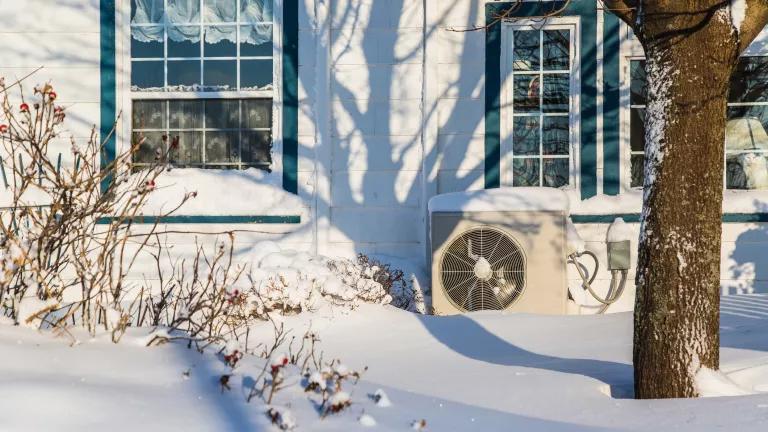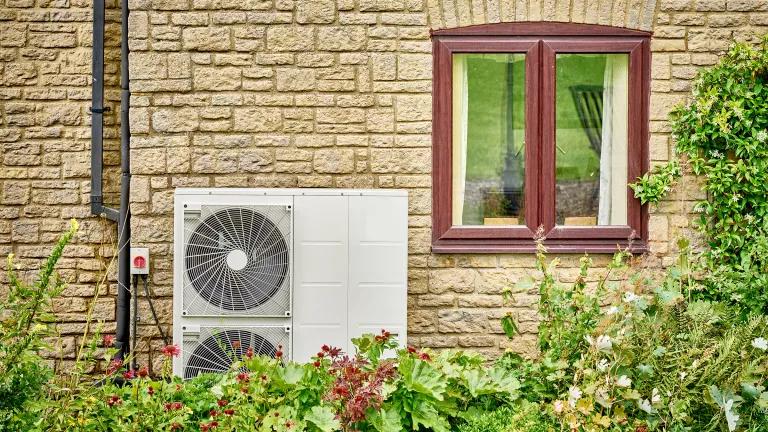The Other Solution to Texas’ Woes: Efficiency and Heat Pumps
As Texans continue to grapple with the devastation from recent winter storms, weatherization and modern super-efficient heating technology are powerful tools that can ease the stress on the electric grid and help Americans stay safe and comfortable.

As Texans continue to grapple with the devastation from recent winter storms, it is becoming increasingly clear that the failure of the state’s electric system was caused as much by an exceptional surge in demand for power as it was by a failure of power plants that weren’t equipped to handle the severe weather.
The sweeping blackouts that left millions in life-threatening cold conditions, and enduring burst pipes, flooded homes, and no running water, make it clear that policy makers across the country must act now to prevent future extreme weather events from breaking our energy infrastructure and leading to similar public safety crises elsewhere. Fortunately, home weatherization and modern super-efficient heating technology are powerful tools that can ease the stress on the electric grid and help Americans stay safe and comfortable in today’s increasingly extreme climate.
The catastrophic infrastructure failures in Texas weren’t limited to power generation—the state’s leaky and uninsulated buildings were a big part of the problem. Nearly 70 percent of Texas homes were built in 1999 or earlier, before the advent of modern energy codes designed to cut energy waste—meaning they have little insulation. Further, the state’s reliance on outdated and inefficient heating has grown significantly in the last several decades, with 35 percent of homes using gas furnaces and 60 percent using electric heating, most of those furnaces or minimum efficiency heat pumps.
This combination is a recipe for disaster when a cold snap strikes, as heating demand spikes in uninsulated homes and inefficient heaters exacerbate the surge in energy demand. In Texas, inefficient heaters in poorly insulated buildings helped fuel demand for a whopping 15 to 20 more power plants’ worth of electricity at exactly the time when the existing power plants were struggling to stay online.
This problem won’t be solved by using gas heat: gas furnaces may require less electricity to operate, but they compete for gas with power plants, contributing to the stress on the electric grid. This was the case when the same storms hit Colorado and the state’s largest utility was forced to reduce gas supplies to electric generators in order to preserve the fuel for residential and commercial heating. Adding more inefficient gas heating would only have made Texas’ fuel supply shortages worse.
The better option is to reduce energy demand as much as possible by weatherizing buildings, use the most efficient technology available to heat homes, use demand flexibility to spread limited supplies without shutting power off entirely, and reserve all available fuels to ensure there is enough electric generation to heat every home.
Highly efficient buildings and electric technologies keep everyone safe and warm
During a power outage, no conventional heating system works, neither a heat pump, nor a gas furnace: gas heating needs electricity for ignition and to power the blower fan; most gas water heaters need electricity for ignition and venting. No heating system can be entirely resilient to power outages, but efficient heating systems will help the electric grid stay up and running in the first place, ensuring that no one will have to go without essential power supply.
Highly efficient electric technologies, such as heat pump space and water heaters, are a key part of this solution (discussed further in a new NRDC fact sheet). Today’s advanced electric heat pump technology is three to five times more efficient than typical gas and electric resistance equipment for heating water and indoor spaces—and readily available to serve home heating needs across the country. Modern air-source heat pumps can deliver heat efficiently down to minus 15 F, and use electric resistance backup below that. Ground-source and water-source heat pumps can efficiently heat homes at even lower outdoor temperatures. Together, home insulation and efficient heat pumps would have limited the surge in power demand, reducing the stress on the Texas grid, and helped to avoid or reduce the blackouts.
America has a choice
Extreme weather events aren’t going away. In fact, we should only expect them to increase in frequency and magnitude as the climate crisis worsens. For example, at the height of the Texas blackouts, the electric distribution system had to withhold 20,000 megawatts of electricity from its citizens just to keep the system operating. That was 40 times the magnitude of the 500 megawatt maximum interruption in California’s outages during last summer’s extreme heat-driven electric interruptions and lasted just two hours and 20 minutes over two days.
Relying on fossil fuels instead of energy efficiency and modern heating technology isn’t reliable, it isn’t keeping people warm and safe, it costs more, and fossil fuels need to be phased out if we are to avoid a worsening of climate disruption that causes these unprecedented but increasingly frequent storms In the aftermath of this devastating tragedy, Texas and the rest of the country have a choice: double down on the polluting energy sources and inefficient buildings of the past, or move to a brighter future of cleaner, cheaper, more reliable energy, and warm and cozy homes.




